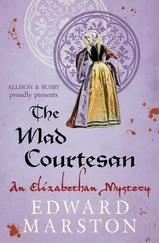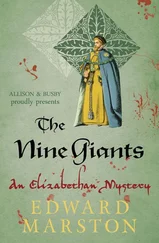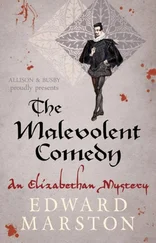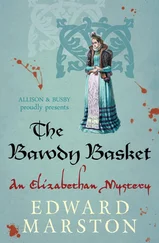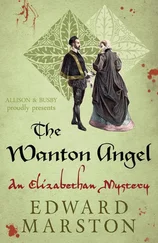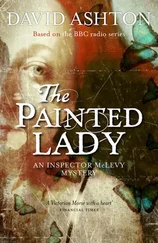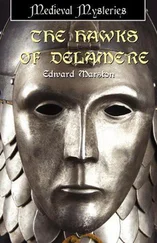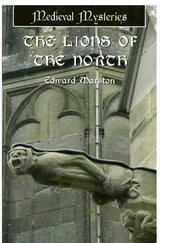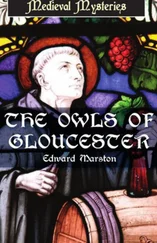Edward Marston - The Painted Lady
Здесь есть возможность читать онлайн «Edward Marston - The Painted Lady» весь текст электронной книги совершенно бесплатно (целиком полную версию без сокращений). В некоторых случаях можно слушать аудио, скачать через торрент в формате fb2 и присутствует краткое содержание. Год выпуска: 2011, ISBN: 2011, Издательство: Allison & Busby, Жанр: Исторический детектив, на английском языке. Описание произведения, (предисловие) а так же отзывы посетителей доступны на портале библиотеки ЛибКат.
- Название:The Painted Lady
- Автор:
- Издательство:Allison & Busby
- Жанр:
- Год:2011
- ISBN:9780749010324
- Рейтинг книги:3 / 5. Голосов: 1
-
Избранное:Добавить в избранное
- Отзывы:
-
Ваша оценка:
- 60
- 1
- 2
- 3
- 4
- 5
The Painted Lady: краткое содержание, описание и аннотация
Предлагаем к чтению аннотацию, описание, краткое содержание или предисловие (зависит от того, что написал сам автор книги «The Painted Lady»). Если вы не нашли необходимую информацию о книге — напишите в комментариях, мы постараемся отыскать её.
The Painted Lady — читать онлайн бесплатно полную книгу (весь текст) целиком
Ниже представлен текст книги, разбитый по страницам. Система сохранения места последней прочитанной страницы, позволяет с удобством читать онлайн бесплатно книгу «The Painted Lady», без необходимости каждый раз заново искать на чём Вы остановились. Поставьте закладку, и сможете в любой момент перейти на страницу, на которой закончили чтение.
Интервал:
Закладка:
When she had changed her dress and her shoes, and had her hair brushed by her maid, Araminta Culthorpe took a last critical look in the bedroom mirror before deciding that she was ready.
‘Shall I find Sir Martin?’ volunteered Eleanor Ryle.
‘No, thank you,’ said Araminta. ‘I’ll find him myself.’
‘Will you talk about the painting with him?’
‘In a while, Eleanor.’
‘I’d so like to wear that blue dress, Lady Culthorpe.’
‘I know.’
‘It would be wonderful to work as Mr Villemot’s model.’
‘We shall see.’
Leaving the maid with reason to hope, Araminta went out of the room and down the stairs. She walked across the hall and along a passageway that led to the garden. When she let herself out of the house, she could see no sign of her husband so she assumed that he was sitting on a bench in one of his favoured places. She went off to explore the garden, looking for the telltale sign of tobacco smoke rising over a hedge or curling up into the sky behind some statuary.
Araminta was so glad that she had elected to say nothing about her occasional moments of disquiet at the studio. Now that she was back in her lovely house, wearing a different dress and taking on the role of a doting wife once more, she could forget all about Jean-Paul Villemot. Memories of their exchanges could not reach her there. She felt safe and secure in a marriage that had changed her life for the better in every way. To most people, Sir Martin Culthorpe would have seemed an unlikely choice for someone who could have had the pick of society but she knew that she had accepted the right husband. He gave her love, protection and social standing. His greater age did not deter her in the least because it brought with it wisdom and experience. Sharing his religious conviction and having the same charitable disposition, she looked forward to helping him in his work and developing a true partnership with him. Meanwhile, Araminta needed to find her husband and take him in to dinner.
‘Martin!’ she called. ‘Where are you?’
When there was no reply, she walked as far as the fountain at the very heart of the garden then raised her voice above the noise of the falling water.
‘Martin — I’m back!’
Still, there was no response. Araminta followed the main path between the avenue of maple trees, looking to left and right as she did so in case he had turned down one of the side paths. There was no trace of him. Quickening her step, she walked on until she reached the end of the little avenue. She went around the angle of the rhododendrons and into the secret grotto beyond. Araminta let out a sigh of relief. Her search was finally over.
Apparently asleep, Sir Martin Culthorpe was seated on a bench with the sun slanting across his face. He looked somehow older but that did not worry his wife. Feeling an upsurge of love, she ran across to him, intending to wake him up by kissing him on the forehead, but she felt something hard beneath her foot. She looked down to see that it was his clay pipe, broken in two and lying on the path.
Araminta was suddenly apprehensive. Now that she looked at him more closely, she could see that her husband was sitting in a most unnatural position. She felt alarmed. Wanting to reach out to him, she was somehow held back from doing so. Instead, in trepidation, she took an involuntary step backwards. Mouth dry and heart pounding, she stared at him with growing anxiety.
‘Are you unwell, Martin?’ she whispered.
As if in response to her question, he suddenly pitched forward and landed headfirst on the path. It was only then that she saw the huge bloodstain from the wound in his back.
Christopher Redmayne had promised to call at the studio that afternoon to discuss with Jean-Paul Villemot the schedule of payments during the building of the new house, and to retrieve the model made by Jonathan Bale. As his horse trotted along the road, he smiled at the memory of his encounter with Samuel Littlejohn. The builder clearly had a jaundiced view of foreigners, suspecting them of being universally difficult, volatile and unpredictable. That had not been Christopher’s experience. He had designed houses for a Frenchman, a Dutchman, two Germans and a Swede. None of them had given him the slightest trouble. The only clients of his who had been obstinate and argumentative were native-born Englishmen. Chief among them, he was forced to admit, was Sir Julius Cheever, Member of Parliament and father of the woman he loved. It was a sobering thought.
Jean-Paul Villemot had so far been the perfect employer, recognising, in Christopher, a fellow-artist and trusting his instincts. Whatever advice the architect gave had been readily accepted. Once the general principles of the design had been agreed upon, Christopher had been allowed a free hand. Littlejohn might fear the tantrums of an excitable foreigner but Christopher did not share his unease. He firmly believed that there would be no problems of that nature ahead.
Arriving at the house, he dismounted, tethered his horse and rang the bell. The door was soon opened by a maid who showed him upstairs to the suite of rooms rented by Villemot. In response to his knock, it was Emile who invited him into the studio, explaining that his master was out but that he would soon return.
‘Voulez-vous l’attendre?’ he asked.
‘Oui,’ replied Christopher.
‘ Asseyez-vous, s’il vous plait.’
‘Merci, Emile.’
When Christopher sat down, the Frenchman excused himself and left the room. Evidently, he was much more than a valet. Emile was also Villemot’s cook, butler, book keeper, companion and general assistant, performing all his functions with quiet efficiency. His English was not yet as fluent as that of his master but Christopher guessed that it would be in due course. Emile struck him as the kind of man who could do anything to which he addressed his mind.
Glancing around, Christopher decided to take a closer look at the studio. When he got to his feet, however, he realised that he was not alone. Clemence was regarding him with a degree of suspicion through one open eye. Like the valet, the black cat exuded a deep sense of loyalty to her master. When Villemot left the studio, Clemence remained on guard. Christopher did not know what test he was being subjected to but he seemed to pass it because the cat eventually closed her eye, curled up and went back to sleep.
Christopher felt at home. The studio had the same amiable clutter as his study in Fetter Lane and the same accumulation of recent projects, either abandoned or awaiting completion. What drew his attention was the easel on which the portrait of Lady Araminta Culthorpe was resting. It was covered by a piece of cloth and he could not resist lifting it up so that he could take a peep at the painting. What he saw astounded him.
Aware of Villemot’s reputation for speed, Christopher could not believe the artist had done so much in such a short period of time. The background still needed to be sketched in, and the dress required a lot more work on it, but the head and shoulders of his subject were almost finished. The verisimilitude was amazing. Villemot had not merely caught her beauty and her serenity, he had brought out Araminta’s character in the portrait. She looked exactly like the quiet, serious, thoughtful, intelligent young woman that Christopher had met in that very studio. On the canvas before him was an image of pure contentment and he was duly moved.
It pained him to recall that his brother posed a threat to her, and he knew that Henry was not discouraged by the fact that she was now married. Some of his other conquests had had husbands. Henry regarded holy matrimony as nothing more than a further hurdle to be cleared before he seized his prize. Looking at Araminta’s face and reminded of her rare qualities, Christopher promised himself that he would do everything in his power to keep his brother away from her. Nothing would be permitted to spoil her radiant happiness.
Читать дальшеИнтервал:
Закладка:
Похожие книги на «The Painted Lady»
Представляем Вашему вниманию похожие книги на «The Painted Lady» списком для выбора. Мы отобрали схожую по названию и смыслу литературу в надежде предоставить читателям больше вариантов отыскать новые, интересные, ещё непрочитанные произведения.
Обсуждение, отзывы о книге «The Painted Lady» и просто собственные мнения читателей. Оставьте ваши комментарии, напишите, что Вы думаете о произведении, его смысле или главных героях. Укажите что конкретно понравилось, а что нет, и почему Вы так считаете.

